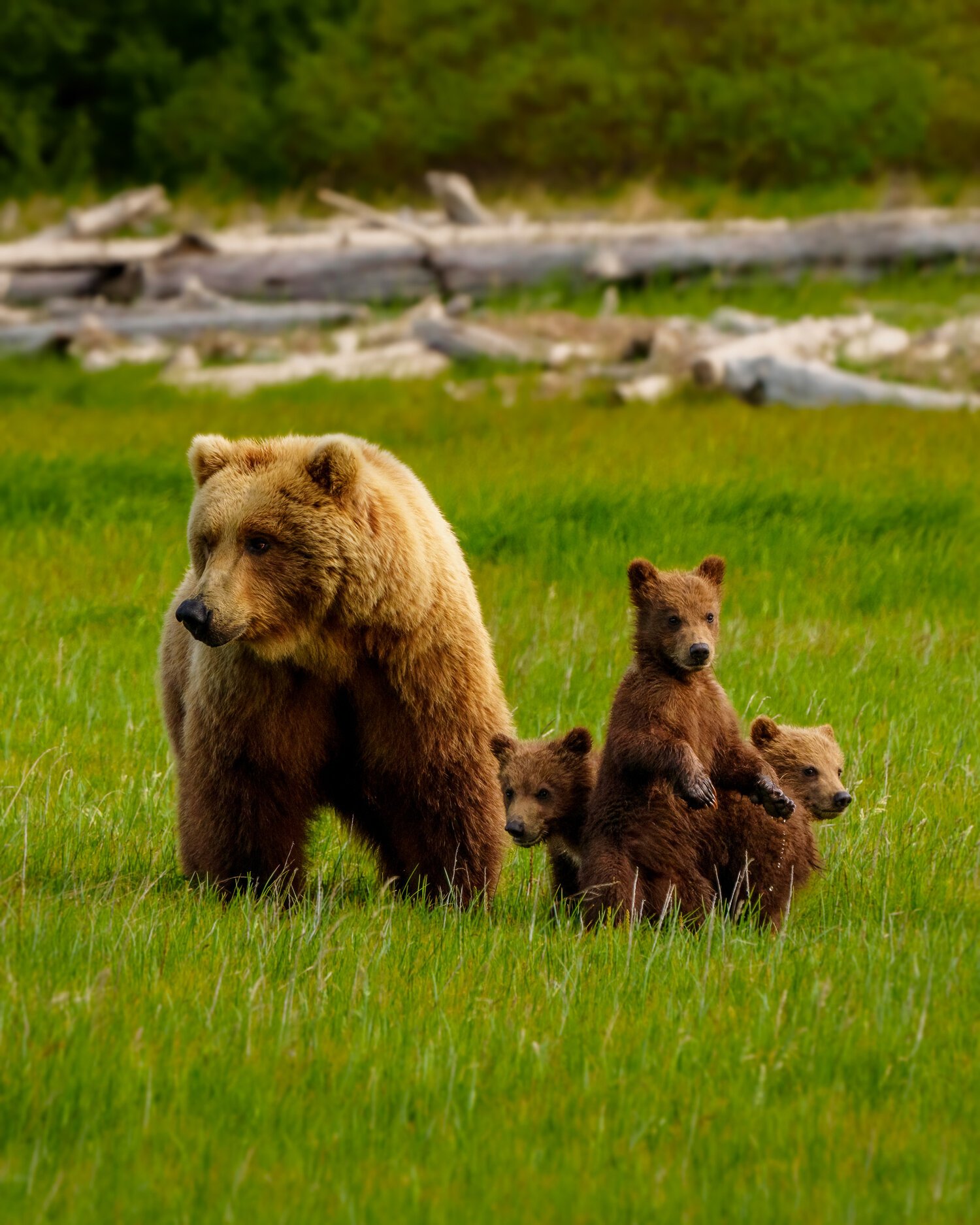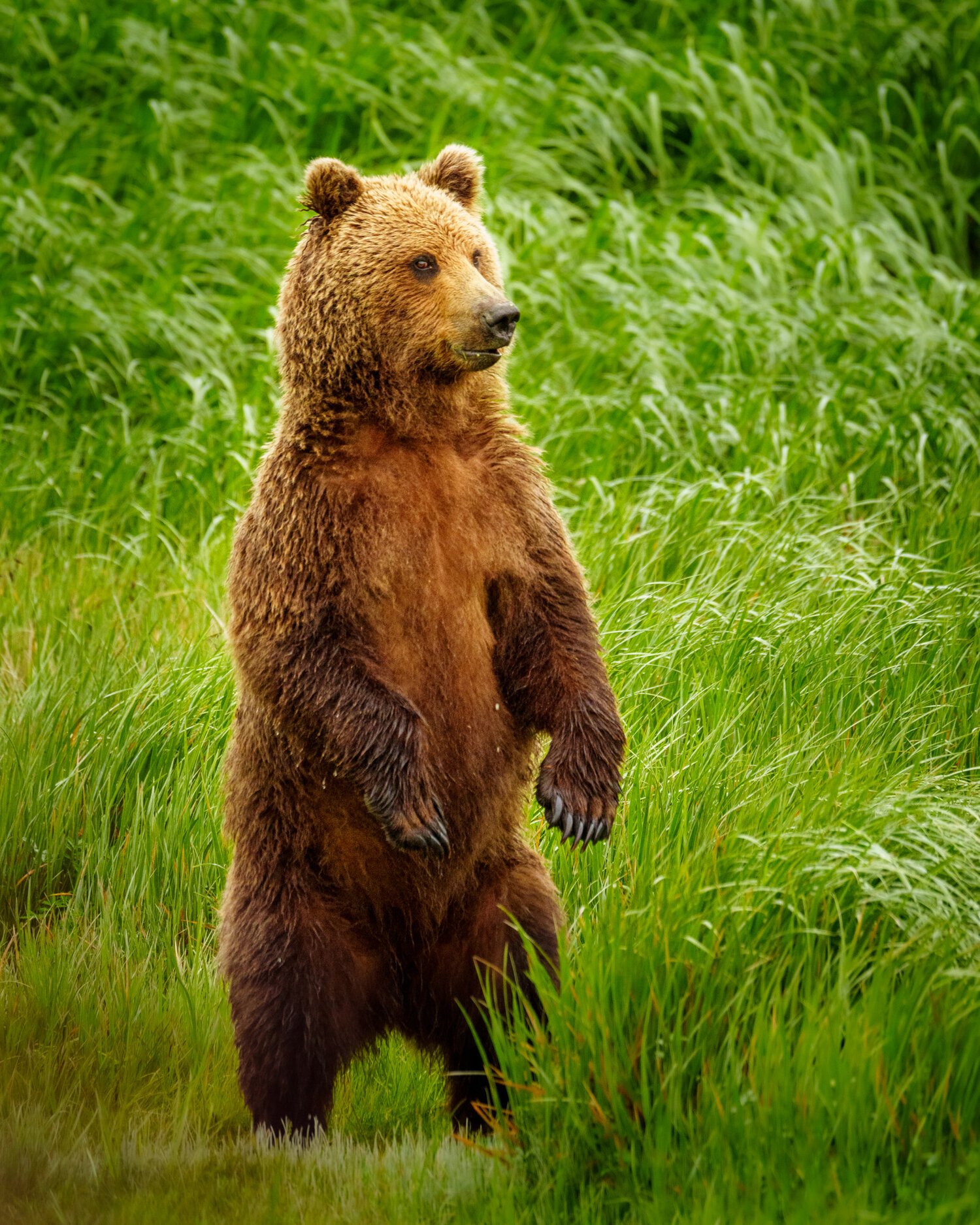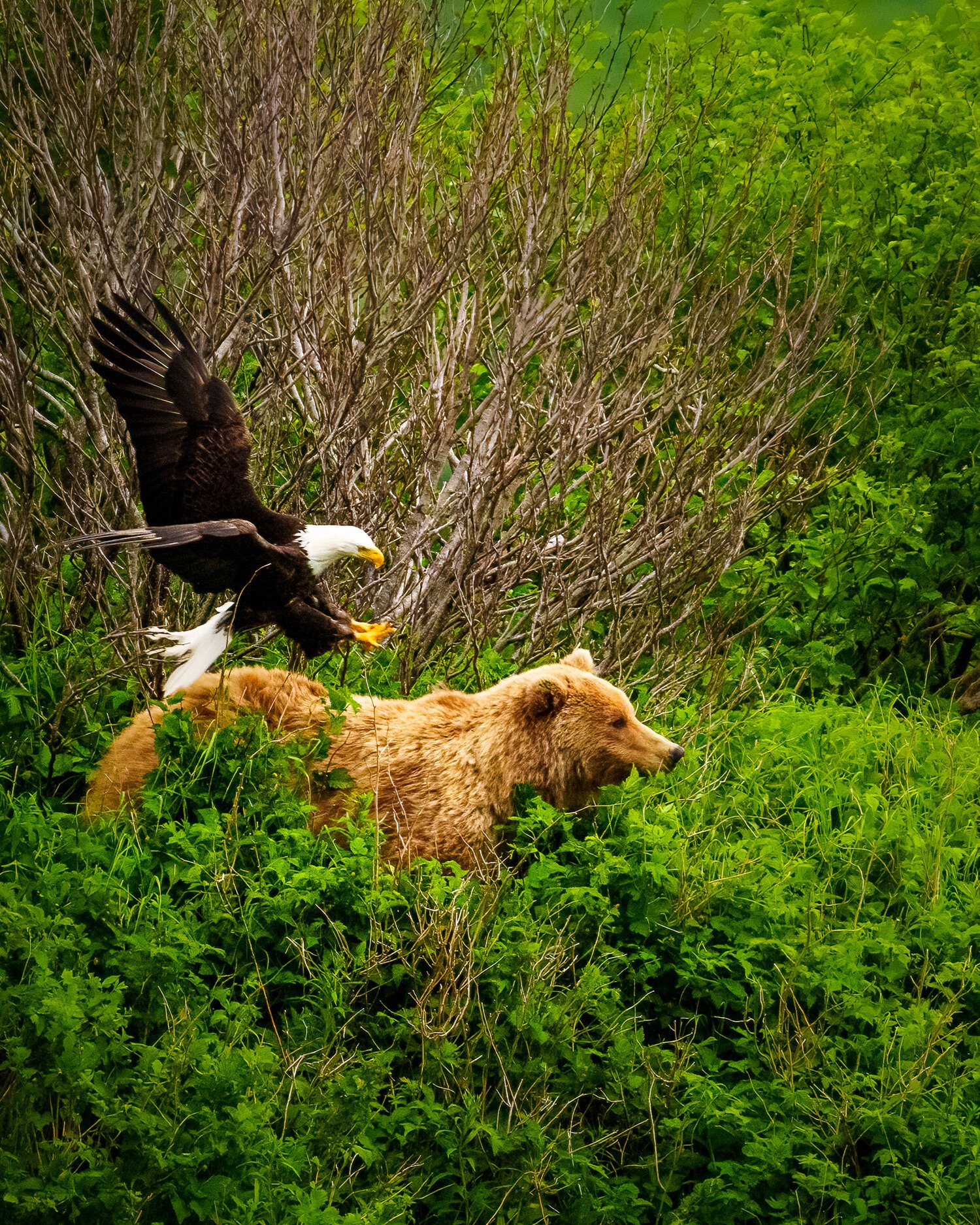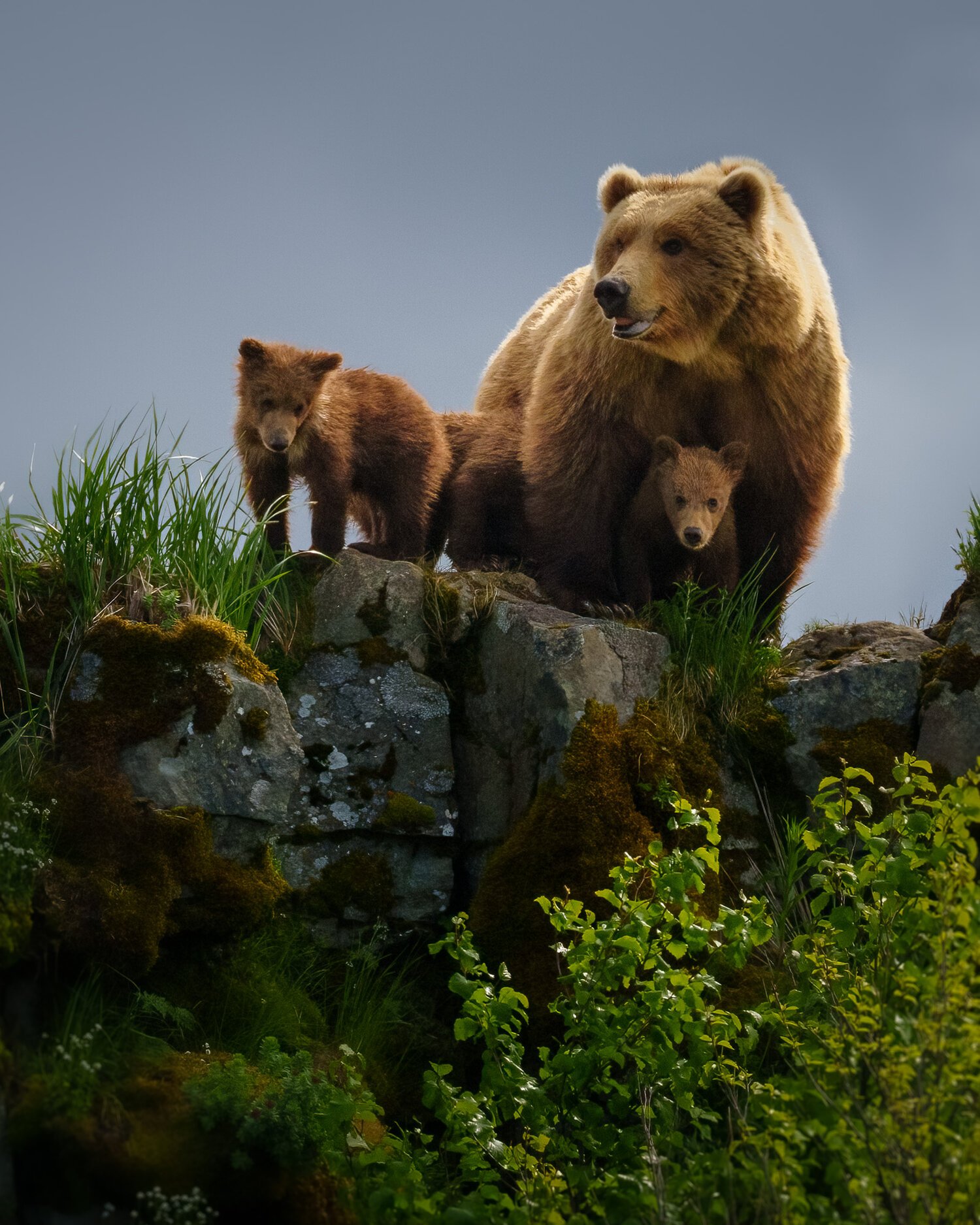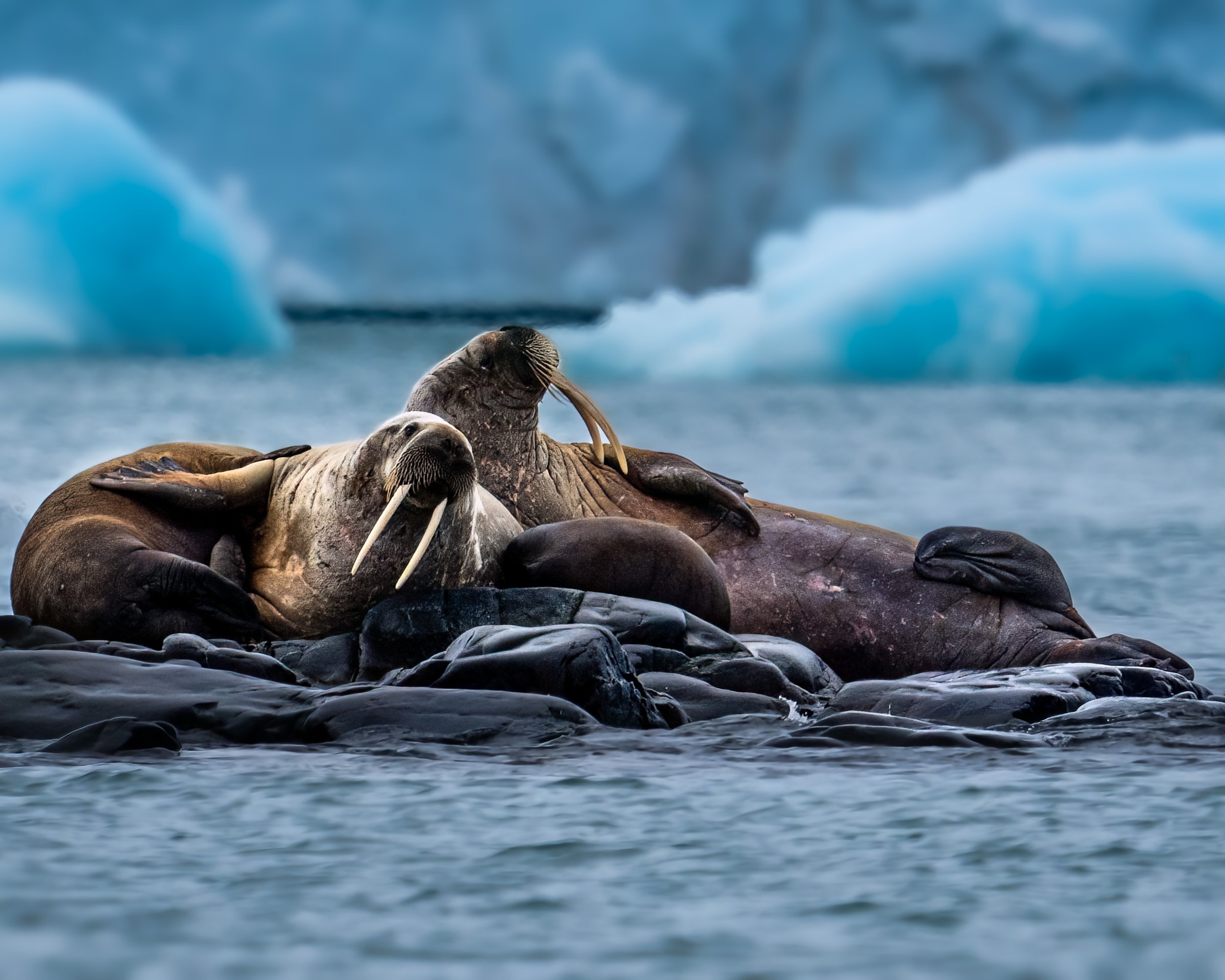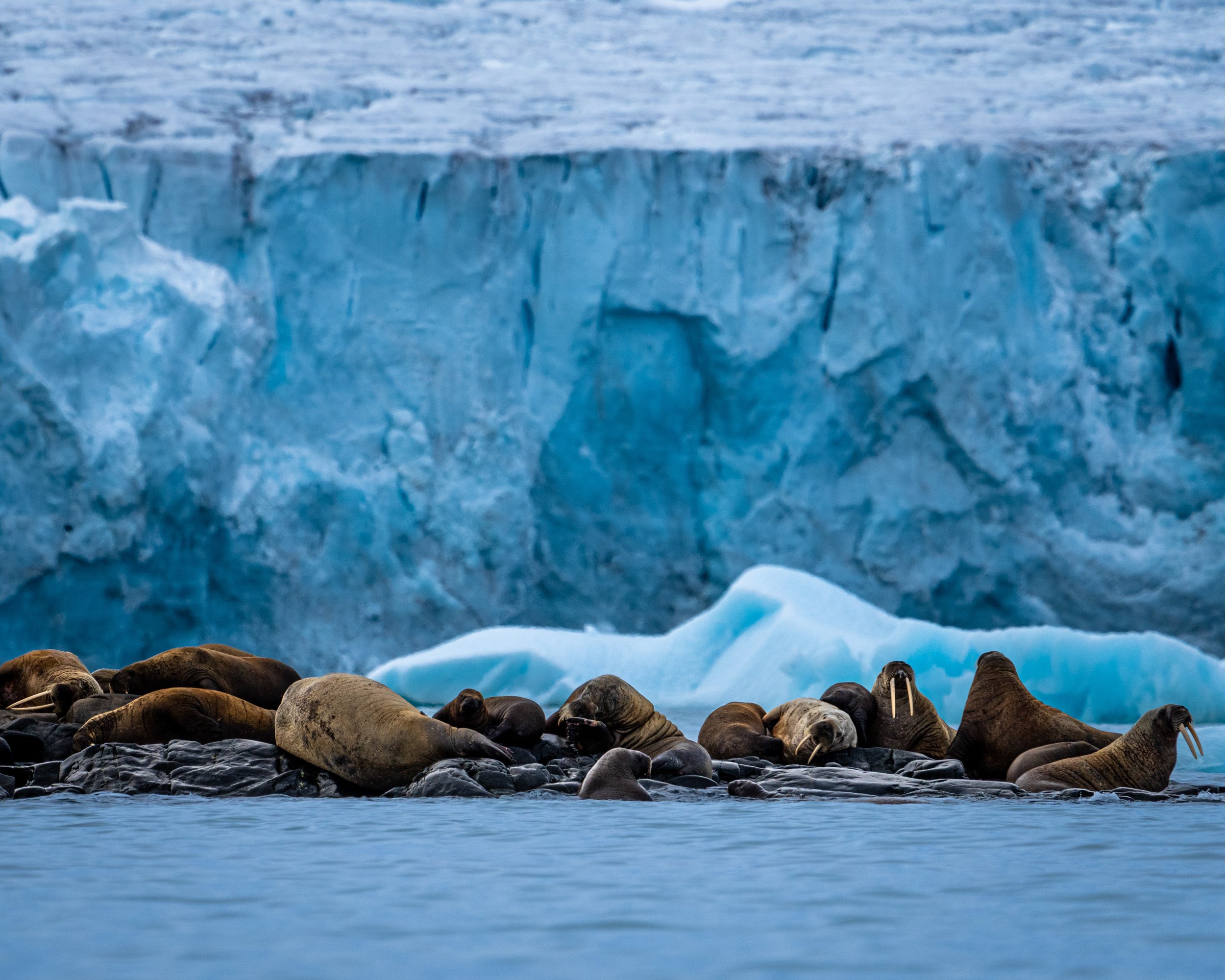There are moments you are glad you captured with a photo because you might just believe that it didn't really happen, you couldn't be that lucky to see something so special.
I was stressed leading up to the tour. The weather forecast was grim! Rain and lots of wind to make waves. Plus we had the aborted flight coming into Kodiak and a last-minute scramble to find rooms in Anchorage. Obviously, I can't control the weather but when you are leading a tour you want everyone to have a good time Being stuck inside a not very big boat for a week with seasick people is not the trip that people hope for. Thanks to the hard work and knowledge of our captain and bear guide, Trevor, we not only safely avoided the worst of the weather we also had an amazing time.
A few hours into our first bear viewing excursion we came across this momma and her three cubs. These are brown bears, usually called grizzly bears in the lower 48 but known here as coastal brown bears, and because of their access to the coast and salmon later in summer grow much larger.
Here, momma was nervous about some other male bears nearby. Her cubs were picking up her cues and helping keep watch. Again, the work Trevor has put in made this possible and with a little photo coaching by me, everyone successfully captured this sweet moment and that's just the best that you can hope for when out photographing wild animals.




